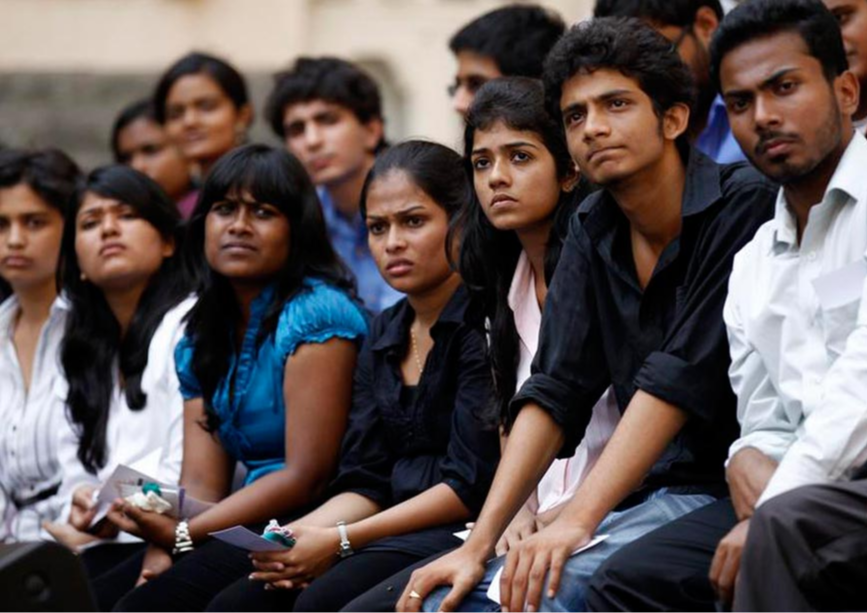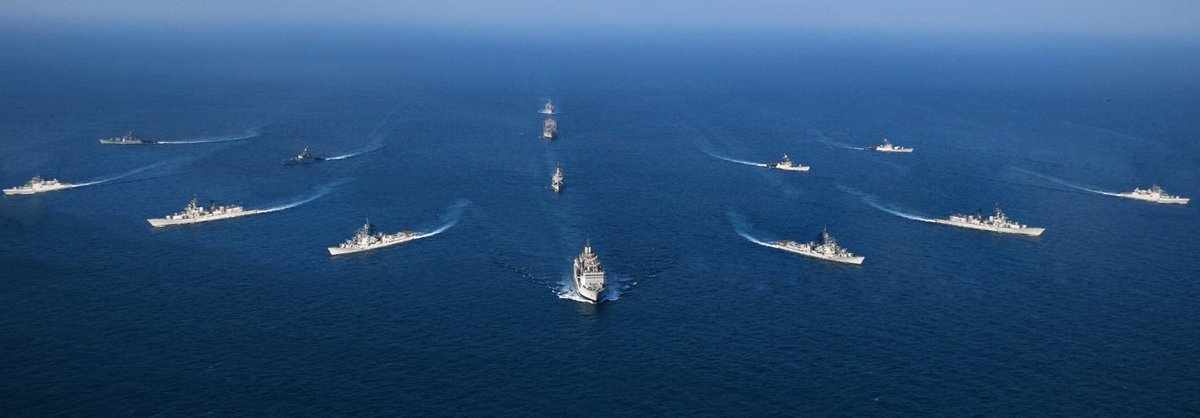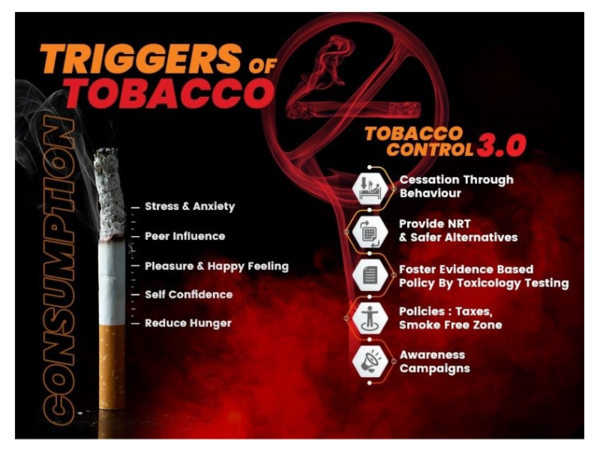Global Labor Shortages and India's Perspective

India is in a unique position to solve the labor shortages in many developed countries, having overtaken China as the world's most populated nation. India has more than 1.4 billion people living in it, of which approximately 65 percent are working age (15–64 years), and more than 27 percent are between the ages of 15 and 24. Given these youthful demographics, India has a great deal of potential to favorably impact the global labor market.
India's Job Market Dynamics and Economic Growth
- With a GDP growth rate of 7.8 percent, India is now the largest growing big economy in the world, and as such, the work market is changing significantly. This is due to the COVID-19 pandemic. With strong public investment and private demand driving the economy, India may be able to reach its goal of having a US$ 5 trillion GDP by 2026–2027.
- Estimates of employment elasticity from a recent ORF report show notable variations by gender, area, and industry. The longest-term employment elasticity is seen in the service industry, especially for women (0.31) and in rural areas (0.53).
Changes in Global Demography and Labor Scarcities
- On the other hand, aging populations and falling birth rates are driving fast demographic changes in many high-income nations. These countries' working-age populations will have decreased by over 92 million by 2050, while their senior populations—those 65 and older—will have increased by over 100 million.
- A significant imbalance is brought about by this change in the population since working-age people are necessary to sustain the healthcare and pension systems that support the older generation, which preserves social and financial stability.
Advanced Nations' Necessity for New Workers
- In the next 30 years, sophisticated nations will require roughly 400 million additional workers to maintain the existing ratio of working-age people to the elderly; domestic workforce mobilization alone will not be sufficient to satisfy this need.
- This demonstrates how India may ensure reciprocal economic progress and integration by deliberately matching the demands of advanced economies with its labor supply.
- For example, it is predicted that by 2050, the number of working-age people in Germany would drop by 10 million, while the number of elderly people will increase dramatically. As seen in the figure below, similar trends are seen in Italy, Japan, and other industrialized countries.
Improving Productivity and Global Equity via Labor Mobility
- Labor mobility has the ability to improve global equity and productivity by linking employers in need with prospective migrants. Workers who relocate to wealthy nations should expect a six- to fifteen-fold boost in pay, which will greatly reduce poverty.
- India offers a sizable potential workforce thanks to its population advantage. According to projections, by 2050, there will be two billion more people of working age in low-income nations like India. In developed nations, there is a chance to close the labor supply and demand gap because to this excess work force.
The Function of Transfers
- Labor mobility has benefits that go beyond the personal experiences of individual migrants. The money that migrant workers send home can be quite important to the economies of their home nations.
- India became the first nation to receive remittances worth more than $100 billion as it surpassed US$ 111 billion in 2022. These grants support overall economic growth, better healthcare, education, and poverty alleviation. But the pandemic had a serious negative effect on migrant workers, especially those with low-skilled jobs, which resulted in large job losses and debt.
Obstacles to Labor Mobility
- Even while labor mobility has many advantages, the structures in place to support it are not large enough to handle the required size, and negative public attitudes frequently impede their progress.
- Potential migrants face obstacles due to anti-immigrant sentiments and restrictive immigration rules in numerous high-income nations. These cultural problems frequently result in immigration policies that restrict immigration and do not offer sufficient support networks for newcomers.
- Furthermore, the administrative and legal barriers related to migration might be quite difficult.
- Complicated immigration laws in many nations may discourage prospective immigrants.
- Comprehensive integration programs, which aid migrants in acclimating to their new surroundings and contributing to society, are sometimes lacking.
Methodical Approaches to Improve Workforce Mobility
An organized and systematic approach is needed to overcome these obstacles.
- The process can be made more accessible and effective by improving bilateral and multilateral agreements to enhance labor mobility, streamlining immigration procedures, giving clear information about migration opportunities, and providing support services for migrants.
- A more welcoming environment for labor mobility can be achieved by addressing unfavorable public attitudes through public awareness initiatives and emphasizing the beneficial contributions of migrants.
- Change your role from that of a "Vishwa Guru" (global teacher) to a "Vishwa Bandhu" (global partner), emphasizing cooperation and gain-sharing. To properly meet the needs of the global labor market, this change is imperative.
- Invest in skill-building programs to provide its employees the tools they need to meet the demands of the global market.
- Determine High-Demand industries: In developed countries with severe labor shortages, determine high-demand industries like manufacturing, healthcare, and information technology.
- Examine Economic Implications: Using labor market frameworks, examine the economic effects of integrating Indian labor into various industries. This includes determining the productivity of Indian workers and the overall financial impact on the world economy.
- Improve Labor Mobility: By determining the favorable circumstances for Indian labor movement abroad, you may improve labor mobility. This entails lowering transaction costs associated with labor mobility and making sure that returning employees are seamlessly reintegrated into the Indian labor market.
In summary
To properly match the large number of workers in India with the demands of the global market, a multimodal strategy that includes focused skill development programs, improved labor mobility policies, and strong migratory worker support networks is needed. By making such calculated efforts, India can close the labor gap worldwide and position itself as a key player in the global labor market.
India's Marine Diplomacy: Developing Indo-Pacific Security and Collaboration

An important turning point in India's marine diplomacy occurred in 2015 with the commissioning of the Mauritian Naval Ship Barracuda. The Prime Minister of India then presented the term SAGAR, which stands for Security and Growth for All in the Region, as a vision for the Indian Ocean region. In line with the Indian marine Strategy of 2015, this vision placed a strong emphasis on the value of promoting collaboration and resolving issues through cooperative marine interactions. The Indian Navy has aggressively pursued this goal over the last ten years, solidifying its position as the area's go-to security partner and first responder.
Concerning SAGAR
- India's marine cooperation policy or doctrine in the Indian Ocean region is called Security and Growth for All in the Region, or SAGAR. On March 12, 2015, Prime Minister Narendra Modi made the policy's initial announcement.
- There hasn't been a single official documentary released about SAGAR's methodology, but there have been a number of efforts and countless maritime events that fall under this category.
The following definitions apply to the SAGAR initiative based on this vision:
- Security: Improvement of coastal security to enable relatively easy protection of land and marine areas.
- Building capacity entails strengthening security and commercial ties to enable seamless trade facilitation and maritime security.
- In order to address natural disasters and marine dangers including terrorism, piracy, and emergent non-state actors, coordinated action is encouraged.
- Sustainable Development: pursuing more cooperative, sustainable regional development
- Maritime engagement is the process of interacting with nations outside of our borders in order to foster mutual respect for maritime laws, customs, and peaceful dispute resolution.
Creating Friendship Bridges through High-Level Maritime Strategic Exchanges
International maritime cooperation has been fostered through events like the multinational exercise "Milan" and the International Fleet Review (IFR) in 2016. The fact that so many fleets are taking part in these events highlights India's contribution to maintaining calm and peace in the Indian Ocean. Furthermore, by enabling information exchange among marine organizations and nations, programs like the Information Fusion Centre - Indian Ocean Region (IFC-IOR) have advanced maritime safety and security. India's standing as a major actor in influencing the marine environment has been strengthened by these strategic exchanges.
Building Capacity and Capability: India Is a Selected Security Partner
India has made a significant effort to strengthen the capabilities of smaller fleets by providing training and transferring naval equipment. With its surrounding navy, India has improved interoperability and collaboration by providing training infrastructure and sharing knowledge. Strengthening marine capabilities and fostering tighter ties have resulted from the transfer of ships, aircraft, and other assets to countries in the region. These initiatives demonstrate India's resolve to be a dependable security ally in the Indian Ocean.
Utilization of Operations
Since 2017, the Indian Navy's operational deployments in the Indian Ocean have been arranged according to the concept of Mission Based Deployment. The Navy has been able to react quickly to new threats, like as piracy and smuggling, because to this proactive attitude. The Navy has made a significant contribution to preserving maritime security in the area by escorting cargo and carrying out boarding operations. The Indian Navy continues to maintain stability in the Indian Ocean and protect important water lanes by being present and conducting surveillance missions.
Being the Initial Crisis Responder
India's readiness to offer maritime support in times of need demonstrates its dedication to humanitarianism and regional stability. The Indian Navy has been instrumental in resolving emergencies in the Indian Ocean region, from disaster relief efforts to evacuating civilians who have become stuck. Notably, the Navy sent ships to help other nations during the COVID-19 epidemic, proving that it was prepared to aid nearby states in times of need.
In summary
In summary, India's maritime diplomacy in the last ten years has greatly influenced the security environment in the Indian Ocean region. India has become a responsible and capable maritime power through strategic engagements, operational deployments, capacity building initiatives, and crisis response operations. The Indian Navy is in a prime position to contribute significantly to the promotion of peace and prosperity in the Indian Ocean as long as it maintains its focus on regional cooperation and security.
India's Tobacco Control Issues and Solutions

Globally, tobacco use is a major contributor to avoidable illnesses and fatalities. Its effects are not limited to individuals who eat it; they also affect those engaged in its production and cultivation. In India, the tobacco epidemic poses significant health, environmental, and economic challenges. Understanding current trends in tobacco use and implementing effective control measures is crucial to combat the influence of the tobacco industry.
The Amount of Tobacco Use in India
With an estimated 260 million users as of 2016–2017, India is the second-largest tobacco consumer after China. The nation's health system is heavily burdened by this extensive usage. Furthermore, nicotine's skin absorption via the skin poses a risk to the health of nearly 6 million workers in the tobacco business, resulting in a host of potential health problems.
The Effect of Tobacco Cultivation on the Environment
The ecology is severely harmed by tobacco farming. Because it is an erosive crop, soil nutrients are rapidly depleted, requiring the use of more fertilizers, which worsens the condition of the soil. Furthermore, the cultivation of tobacco has a major impact on deforestation. The issue is made worse by the fact that up to 5.4 kilos of wood are needed to process one kilogram of tobacco. Tobacco manufacturing and consumption in India contribute to the country's environmental burden by producing around 170,000 tonnes of garbage annually.
The Economic Cost of Smoking
Tobacco has a significant economic influence in India. According to a 2021 study, during the 2017–2018 fiscal year, the health repercussions of tobacco use caused the nation to suffer losses above ₹1.7 lakh crore. By contrast, ₹48,000 crore was the Union Budget's allotment for health in the same year. Moreover, the annual expense of cleaning up tobacco waste is over ₹6,367 crore. The additional costs of soil erosion and deforestation brought on by tobacco farming are not included in these numbers.
India's Current Tobacco Use Situation
Information on tobacco use in India is provided by the National Family Health Survey (NFHS), the Global Adult Tobacco Survey (GATS), and the Global Youth Tobacco Survey (GYTS). While GATS and NFHS cover those over the age of 15, GYTS concentrates on tobacco use among students between the ages of 13 and 15. According to these polls, tobacco consumption has generally decreased among the groups under study. The 2.1% increase in female tobacco usage between 2015–2016 and NFHS 2019–2021 is an exception, though. The fact that no surveys have been carried out since the COVID-19 epidemic is significant because it could have an impact on tobacco usage patterns.
Programs for Control and Awareness
India is a party to the Framework Convention on Tobacco Control (FCTC), which was established by the WHO in 2005. By assisting nations in creating policies that regulate the supply and demand of tobacco, this program seeks to lower the worldwide rate of tobacco use. Since 1975, tobacco sales in India have been governed by legislation, which underwent significant modifications in 2003 with the passing of the Cigarettes and Other Tobacco Products Act (COTPA). This comprehensive act comprises thirty-three provisions that regulate the manufacturing, promotion, sale, and use of tobacco products.
In order to better implement the FCTC and COTPA, increase public knowledge of the negative effects of tobacco use, and support individuals in quitting, India developed the National Tobacco Control Program (NTCP) in 2007. Another widely acknowledged strategy to reduce tobacco consumption is tobacco taxes, which is used in India. But there isn't enough enforcement of the current policies. For instance, illicit tobacco products are still not adequately regulated, and smokeless tobacco products frequently disregard COTPA packaging regulations. Since 2003, the sanctions for COTPA infractions have not been revised, rendering them non-deterrent.
Difficulties with Cigarette Control
There are many different aspects to tobacco control difficulties. While indirect advertisements are subject to unclear restrictions, direct advertisements are prohibited by the COTPA. This loophole permits indirect tobacco brand promotion through surrogate advertisements that use proxy goods, such as elaichi. These commercials were particularly noticeable during the 2023 ICC Men's Cricket World Cup, when well-known players promoted tobacco companies' stand-in goods. These commercials are dangerous because they indirectly promote tobacco usage.
In order to solve these problems, proposed COTPA modifications in 2015 and 2020 increased the sanctions for violations of the advertisement statute and regulated surrogate commercials, which included video games and movies under the term of "advertisement." The 2020 amendment suggested making the manufacturing, distribution, and supply of tobacco products subject to license requirements. Nevertheless, neither of these bills managed to pass.
NTCP's effectiveness
The efficacy of the NTCP has been questioned. Between NTCP and non-NTCP districts, there was no discernible drop in bidi or cigarette usage, according to a 2018 study published in the journal BMJ Tobacco Control. This inefficiency is caused by a number of factors, such as inadequate staffing, inefficient use and allocation of resources, and a deficiency of efficient monitoring systems.
The Affordability of Tobacco Taxation
The implementation of excise duties to regulate tobacco has been hindered by various issues, including tax evasion, smuggling, illicit manufacture, and counterfeiting. Unintentionally, the shift to the Goods and Services Tax regime has reduced the price of smokeless tobacco products and cigarettes. According to a 2021 study published in BMJ Tobacco Control, the cost of these items has decreased within the previous ten years. According to economist and tobacco policy analyst Rijo M. John, taxes on cigarettes, bidis, and smokeless tobacco products are substantially lower than the minimum 75% tariff recommended by the Framework Convention on Tobacco Control (FCTC).
Business Advocacy and Government Engagement
Tobacco control policies are greatly impacted by the tobacco industry's lobbying efforts. Sustained exclusions from the cessation on bidis and smaller tobacco makers are the result of successful lobbying. Both active and retired public servants frequently interact with the tobacco industry. For example, in 2022, a retired Indian Administrative Services official became an independent director on the Godfrey Phillips board. Furthermore, the largest tobacco firm in India, ITC Ltd., is owned by the Central government to the tune of 7.8%. India's score on the tobacco interference index, which gauges the extent of tobacco industry meddling in politics, has declined as a result of this involvement.
In summary
A strong foundation for regulating tobacco production and consumption in India is provided by COTPA, PECA, and NTCP. However, in order to comply with FCTC recommendations, inflation, and GDP growth, these policies must be implemented more strictly and tobacco taxes raised. In order to protect livelihoods by assisting tobacco farmers in switching to alternate crops, government support is essential. Current data on trends in tobacco usage are crucial for effectively countering the tobacco industry's ever-evolving tactics. Efficient tobacco control in India would remain an unattainable objective in the absence of such data and strict implementation of control methods.



